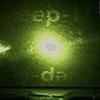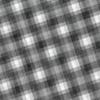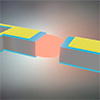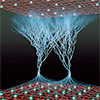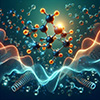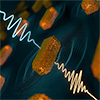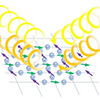Ground level ozone
Ground level ozone (O3) also tropospheric ozone, is a trace gas of the troposphere, with an average concentration of 20–30 parts per billion by volume (ppbv), with close to 100 ppbv in polluted areas. Ozone is also an important constituent of the stratosphere, where the ozone layer exists which is located between 10 and 50 kilometers above the Earth's surface. The troposphere is the lowest layer of the Earth's atmosphere. It extends from the ground up to a variable height of approximately 14 kilometers above sea level. Ozone is least concentrated in the ground layer (or planetary boundary layer) of the troposphere. Ground level or tropospheric ozone is created by chemical reactions between oxides of nitrogen (NOx gases) and volatile organic compounds (VOCs). The combination of these chemicals in the presence of sunlight form ozone. Its concentration increases as height above sea level increases, with a maximum concentration at the tropopause. About 90% of total ozone in the atmosphere is in the stratosphere, and 10% is in the troposphere. Although tropospheric ozone is less concentrated than stratospheric ozone, it is of concern because of its health effects. Ozone in the troposphere is considered a greenhouse gas, and may contribute to global warming.
Photochemical and chemical reactions involving ozone drive many of the chemical processes that occur in the troposphere by day and by night. At abnormally high concentrations (the largest source being emissions from combustion of fossil fuels), it is a pollutant, and a constituent of smog. Its levels have increased significantly since the industrial revolution, as NOx gasses & VOCs are some of the byproducts of combustion. With more heat and sunlight in the summer months, more ozone is formed which is why regions often experience higher levels of pollution in the summer months. Although the same molecule, ground level ozone can be harmful to our health, unlike stratospheric ozone that protects the earth from excess UV radiation.
Photolysis of ozone occurs at wavelengths below approximately 310–320 nanometres. This reaction initiates the chain of chemical reactions that remove carbon monoxide, methane, and other hydrocarbons from the atmosphere via oxidation. Therefore, the concentration of tropospheric ozone affects how long these compounds remain in the air. If the oxidation of carbon monoxide or methane occur in the presence of nitrogen monoxide (NO), this chain of reactions has a net product of ozone added to the system.
Check out these latest Nanowerk News:


